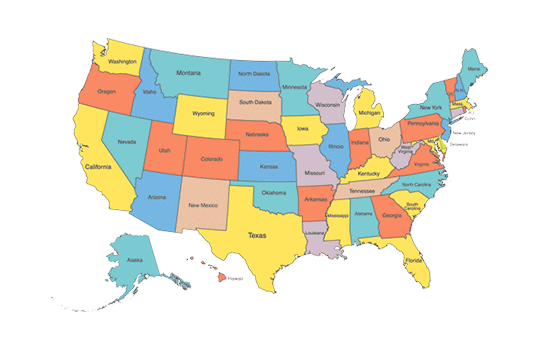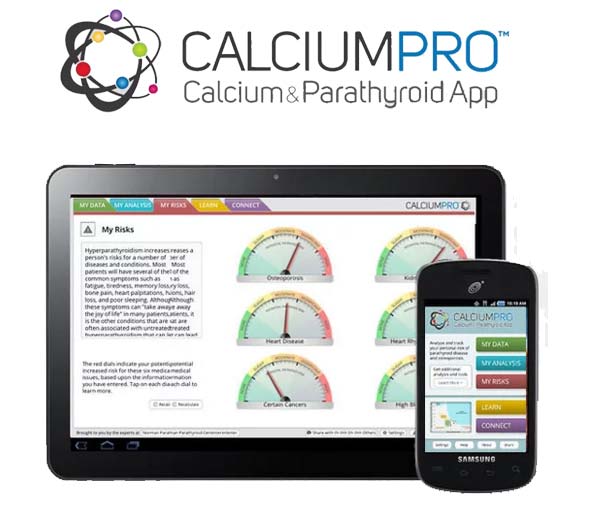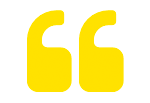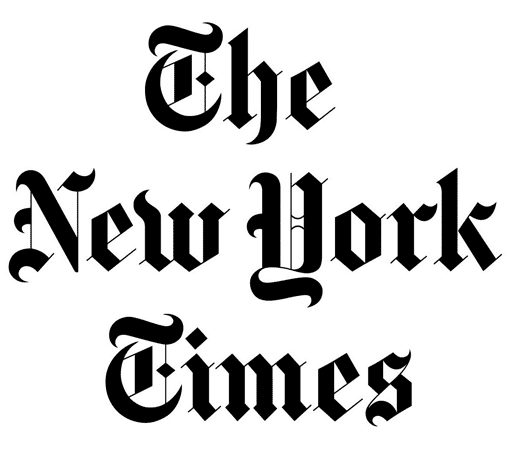Amniotic Nerve Shield Decreases Vocal Cord Nerve Injury During Thyroid / Parathyroid Surgery

New method may improve nerve healing after thyroid surgery.
"The Recurrent Laryngeal Nerve Shield is the most important development in thyroid surgery in 50 years" Dr Gary Clayman.
Injury to the recurrent laryngeal nerve (vocal cord nerve injury) is the biggest worry people have when they are told they need to have a thyroid or parathyroid operation. There has never been shown anything the surgeon can do to decrease the chances of this happening--except to be a better surgeon. And it still happens at least 3-4% of the time to the very best surgeons in the world, and it happens to about 10-15% of patients having surgery by their local surgeon who doesn't do thyroid or parathyroid surgery every day. But now there is something that can be done to potentially decrease the chance of a vocal cord nerve injury after thyroid and parathyroid surgery!
The "Operative Nerve Shield" Protects the Vocal Cord Nerve.
Dr Jim Norman was awarded a patent for this new development on July 9, 2019 (US Patent 10,342,631).
The "Operative Nerve Shield" is a specially designed membrane of human amnion and chorion. This picture shows a small piece of the amnion/chorion membrane that we use to cover the nerve. This membrane "shields" the nerve from further damage and promotes rapid healing. As you will remember, babies are formed within an "amniotic sac". This is the sac that contains the amniotic fluid--the water that the baby grows in. During birth, the amniotic sac is delivered with the placenta. However, it was discovered a few years ago that this membrane sac that the baby was formed in contains a tremendous amount of growth factors, stem cells, and other factors that promote healthy cell development and prevent scar formation and unhealthy cell function. Mothers have the opportunity to donate their placenta and amniotic sac to be used for other medical purposes, and thankfully many thousands of mothers do donate and so we have this amazing tissue to use to help other people. These amniotic membranes are taken from normal live, full-term births from healthy babies.
Amniotic membrane has been used for the past 5 years or so to help eyes heal after trauma, to help tendons heal after trauma, and to help burns and other bad open wounds. The amniotic membrane is processed and sterilized and dehydrated into a paper-thin, dry sheet that becomes extremely soft when it gets moist on the tissue surface in the wound when we place it on the nerve.
Dr Norman came up with the idea of using a piece of this membrane a few years ago to protect the vocal cord nerve (recurrent laryngeal nerve) and the normal parathyroid glands during thyroid and parathyroid surgery. He began studies in patients along with his partner Dr Gary Clayman of the Clayman Thyroid Center. We began using the amniotic membrane on patients who had a thyroid cancer operation where the recurrent laryngeal nerve (vocal cord nerve) was completely dissected and exposed--and therefore at high risk for having a loss of voice post op. We were amazed that the incidence of vocal cord injury and loss of voice went to zero in our first 50 patients. This is decreased from about 3% in the hands of Dr Clayman, the most experienced thyroid surgeon in the US.
Our First Clinical Trials with Amnion on Recurrent Laryngeal Nerves
Several companies make human amniotic tissue available to use in surgery but nobody has used amnion/chorion before to see if it would shield and protect the vocal cord nerve from injury following thyroid and parathyroid surgery. This human tissue is FDA approved to use in humans for surgery and until now, was only used in orthopedics and ophthalmology. Technically the amniotic sac tissue is called "Human Amnion/Chorion Membrane", or HACM. We studied these tissues on vocal cord nerves in our patients and tried tissues that had amnion alone or amnion with chorion and the results were hugely different, with the membrane containing the chorion being much better. Now this makes sense from a science standpoint because the chorion layer is known to contain almost all of the growth factors that we are looking for. We studied the way to put the membrane on the nerve, when to do this during the course of the operation, and other items. What we came up with was the basis for our patent and what we are now using on our patients. We call this the "Operative Nerve Shield".
Think of the amniotic Nerve Shield like a Listerine breath strip shown in the picture above. Although what we use on the vocal cord nerve is less than half this size, it is similar in that when the amnion/chorion membrane is removed from the sterile packaging it weighs almost nothing and is dry and transparent, and very thin. But after it is placed on the nerve and it becomes wet with the serum of the operative field, the membrane drapes the entire vocal cord nerve and coats it like a very thin protective blanket. (We even discussed calling it the "nerve blanket" for a while, but decide on "Operative Nerve Shield" instead).
How Does the Amniotic Operative Nerve Shield Decrease Vocal Cord Nerve Injury?
Amnion and Chorion contain many growth factors that promote healthy cell development.
- The amniotic sac is made up of two layers, the amnion and the chorion. The amnion layer is only one cell thick and is like a piece of Saran Wrap. The chorion layer is only a little thicker, and when the two layers are together they are only about as thick as a piece of newspaper. Very thin, but very powerful!
- These cells have no antigens. They are embryologic tissues and thus are not male/female. They do not have any blood type. They are what is called "privileged" embryologic tissues that have all the basic cell structure of humans, but no mature features. This means we can use these very powerful and very thin tissues in humans and there is no chance of rejection. There is no chance of causing an infection or a foreign body problem. They are "magical" tissues with no known adverse problems.
- The amnion/chorion membrane contain stem cells. Stem cells have been studied for their ability to promote healing and regeneration of other cells.
- The amnion/chorion recurrent nerve shield contains many growth factors that promote normal, healthy cell growth. These factors are helping the nerve cells maintain their integrity and prevents them from further damage during the healing phase after the operation.
- The amnion/chorion nerve shield provides an extremely thin covering that keeps the nerve from becoming dry and prevents the nerve from being exposed to the air during the course of the operation.
- The amnion/chorion nerve shield provides a barrier to rubbing and trauma during the healing stage when the wound is closed and the neck muscles naturally lay on top of the exposed nerve.
Amnion and Chorion contain many factors that prevent cell death and scaring of the vocal cord nerve.
- The amniotic nerve shield membrane contains factors preventing cell death. These inhibitory factors prevent the naturally occurring death of cells when they become damaged. So a nerve that may get a microscopic injury during the operation will be more likely to heal and survive rather than scar and potentially die.
- Amnion/chorion is well known to contain factors that slow or prevent scaring. We believe this is very important to the vocal cord nerve because scaring is a "normal" part of healing but we want to prevent scaring along the nerve.
- The amniotic membrane has well established anti-microbial factors.
Background Information on Vocal Cord Nerve Injuries
What is the recurrent laryngeal nerve? What is the vocal cord nerve?
The recurrent laryngeal nerve, known commonly as the vocal cord nerve, is the nerve that controls the vocal cords on each side of the neck. Both recurrent laryngeal nerves run from the bottom of the neck up along the trachea to enter the larynx (voice box) where it then controls how the vocal cords move and thus the recurrent laryngeal nerves control speech. Because the nerves come from below and run up the neck they are called "recurrent". The recurrent laryngeal nerves are located behind the thyroid gland on both sides and therefore are occasionally injured during surgery for the thyroid and parathyroid glands.
The drawing shows how the recurrent nerve branches off of the (yellow) vagus nerve down in the chest wrapping around the large arteries and then returns up the neck to get to the voice box. The recurrent laryngeal nerve in this diagram is purple. The thyroid has been removed in this diagram so you can see the nerve which normally runs behind the thyroid to enter the voice box to control the vocal cords. It is called "recurrent" because it goes into the chest and then "recurs" (runs backwards) up the neck.
What is a vocal cord nerve injury?
Recurrent laryngeal nerve (RLN) injury is one of the most feared complications after thyroid and parathyroid surgery, or any surgery of the neck. Injury to the recurrent laryngeal nerve occurs much more often than doctors or surgeons will admit. Injury to this nerve can have a very significant effect on the patient's quality of life. Injury to a recurrent laryngeal nerve on one side of the neck produces paralysis of one vocal cord and thus the patient cannot speak. Injury to the vocal cord nerve on both sides of the neck is a much worse complication of thyroid and parathyroid surgery and makes it difficult for the patient to breath and typically requires a tracheostomy.
What are the symptoms of a recurrent laryngeal nerve injury?
Because the recurrent laryngeal nerve controls all of the internal muscles of the larynx (voice box) except the small cricothyroid muscle, injury of this nerve causes paralysis of the vocal cord on that side of the body. Symptoms of recurrent laryngeal nerve injury include the loss of voice, difficulty in speech beyond a whisper, difficulty in catching your breath, and often difficulty swallowing--especially liquids which often can enter the trachea and cause coughing spells. Many patients have a hard time "catching their breath" often taking large gulps of air when trying to talk. The symptoms of vocal cord nerve injury occasionally can resolve over a week or two, but in the vast majority of cases it takes the nerve just under 3 months to begin working again. Nerves that have been cut, stripped, burned with cautery or had a more serious injury rather than just manipulation during surgery may never work again. These patients will require additional operations or procedures on the vocal cord that is controlled by the injured nerve so they can gain some relief of these symptoms.
How common is recurrent laryngeal nerve injury during thyroid and parathyroid surgery?
Injury to the recurrent laryngeal nerve occurs in 2 to 30% of patients undergoing thyroid and parathyroid surgery which is directly related to the experience of the surgeon. Nerve injuries that are temporary and heal in a few months are observed between 5% and 30% according to various published studies [1 - 9]. Permanent nerve injuries that do not improve occur in 0.5% to 5% of all thyroid surgery patients. Thus, vocal cord nerve injuries occur far more often than surgeons will admit and medical articles will claim. These complications are way under-reported and it is very common for surgeons to claim their rates of injury are far lower than they actually are. The risk of injury to the nerve is absolutely and directly related to the experience of the surgeon. Surgeons who have performed thousands of thyroid and parathyroid operations have rates of recurrent nerve injuries of less than 0.5% and they are almost always temporary injuries (that is us at the Norman Parathyroid Center where we perform over 4000 parathyroid operations per year).
Surgeons who perform fewer than 20 thyroid and parathyroid operations per year have recurrent nerve injuries 100 to 200 times more often than experts who perform several hundred operations per year and can have nerve injury rates of 20-30%. Unfortunately, there are only a handful of surgeons who perform hundreds of thyroid or parathyroid operations per year. This is why Drs Norman and Clayman have developed the Recurrent Laryngeal Nerve Amnion Patch -- to help prevent or lessen the severity of vocal cord nerve injuries for all patients who are being operated on by surgeons at all skill levels.
Although the recurrent laryngeal nerve is at risk for injury during surgery of the thyroid, parathyroid glands most commonly, they are also at risk for injury for any neck operation including surgery for the, esophagus, larynx, and carotid arteries as well as anterior neck cervical fusion.
What can be done to lessen injuries to the recurrent laryngeal nerve during thyroid surgery?
The best way to decrease your chances of a vocal cord nerve injury during thyroid or parathyroid surgery is to chose a surgeon that performs thyroid or parathyroid surgery ONLY. If they perform other types of surgery then their risks of nerve injury are statistically much higher.
Bibliography supporting use of amniotic nerve shield to prevent vocal cord nerve injury
- Norman J. US Patent 10,342,631) Shield for recurrent laryngeal nerve and associated method of use to protect the vocal cord nerve from injury.
- Pending: Norman J, Clayman G. Application of human amnion/chorion membrane may prevent recurrent nerve injury following thyroid surgery. 2019, manuscript in preparation.
- Pending: Clayman G, Norman J. Randomized, blinded trial to determine ideal amniotic composition for use in protecting the recurrent laryngeal nerve during thyroid surgery. 2019, manuscript in preparation.
- Pending: Norman J, Clayman G. Human amnion/chorion appears to protect parathyroid glands following total thyroidectomy leading to more rapid return of normal function. 2019, manuscript in preparation.
- Bourgeois M, Loisel F, et al. Can amniotic membrane be used to treat peripheral nerve defects? Hand Surg Rehabil. 2019 Jun 8. S2468-1229(19)30076-3
- Lemke A, Ferguson J, et al. Transplantation of human amnion prevents recurring adhesions and ameliorates fibrosis in rat model of sciatic nerve scaring. Acta Biomater. 2018 Jan 15;66:335-349.
- Zeien C, Snyder R, et al. The use of human amnion/chorion membrand in the clinical setting for lower extremity repair. Clin Podiatr Med Surg. 2015 Jan;32(1):135-46.
- Koob TJ, Lim JJ, et cal. Properties of dehydrated human amnion/chorion composite grafts: implications for wound repair and soft tissue regeneration. J Biomed Mater Res B Appl Biomater. 2014 Aug;102(6):1353-62
- Massee M, Chinn K, et al. Dehydrated human amnion/chorion membrane regulates stem cell activity in vitro. J Biomed Mater Res B Appl Biomater. 2016 Oct;104(7):1495-503.
- Koogan S, Sood A, Granick MS. Amniotic membrane and clinical applications in wound healing: A review of the literature. Wounds. 2018 Jun;30(6):168-173.




